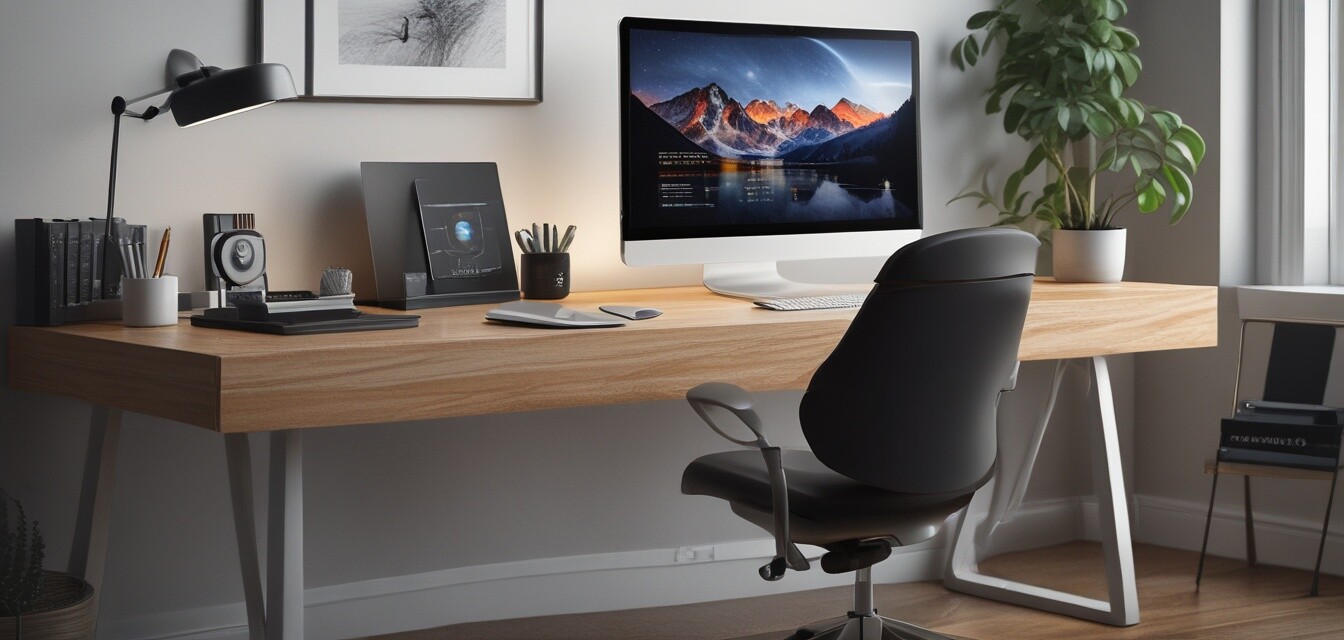
Essential Accessories for Graphic Designers
Key Takeaways
- Investing in quality peripherals boosts productivity.
- Ergonomics play a crucial role in comfort and focus.
- Multi-monitor setups can enhance design workflows.
- Using docking stations can simplify your workspace.
- Choosing the right network solutions ensures seamless connectivity.
As a graphic designer working from home, having the right accessories can significantly enhance your productivity, creativity, and comfort. In this guide, we will explore essential accessories tailored to meet the unique needs of graphic designers. From ergonomic tools to advanced connectivity solutions, we cover everything you need to excel in your design work.
Ergonomic Tools
Comfort should be a priority in any workspace, especially when you spend long hours designing. Here are some ergonomic tools that can make a considerable difference:
- Ergonomic chairs: These chairs support your posture and reduce strain on your back during long design sessions.
- Adjustable desks: Allowing you to alternate between sitting and standing can improve your overall comfort and health.
- Wrist supports: Keyboards and mouse wrist supports can reduce the risk of repetitive strain injuries.
Monitor and Display Solutions
Visual clarity is paramount for graphic designers. Here are essential display solutions:
- High-resolution monitors: Opt for monitors that provide excellent color accuracy to bring your designs to life.
- Multi-monitor setups: Using multiple screens boosts your productivity by allowing you to multitask more efficiently.
- Monitor stands: Elevating your screen can prevent neck strain and create a more comfortable viewing angle.
Comparison of Monitor Types
| Monitor Type | Resolution | Color Accuracy |
|---|---|---|
| IPS Panel | 4K | Excellent |
| VA Panel | 1440p | Good |
| TN Panel | 1080p | Fair |
Graphic Tablets
For many graphic designers, a graphic tablet is an essential tool for creating digital artwork. Here’s why you need one:
- Offers precision in drawing and design, mimicking the feeling of traditional media.
- Pressure sensitivity allows for dynamic strokes, enhancing creativity.
- Connects easily with design software for seamless operation.
Connectivity Solutions
No designer wants to deal with connectivity problems. Investing in solid network solutions is essential:
- Docking stations: Simplify connections for peripherals and monitors, reducing cable clutter.
- High-speed routers: Ensure that your internet connection is reliable and efficient for downloading large files.
- USB hubs: Expand the number of ports available for your devices, making your setup versatile.
Benefits of Docking Stations
| Benefit | Description |
|---|---|
| Simplified Connections | Connect all your devices with a single cable. |
| Port Expansion | Add extra USB ports for more devices. |
| Enhanced Desktop Organization | Keep your workspace tidy and efficient. |
Audio Equipment
Don't forget about the audio aspect of your work environment. Quality audio equipment can enhance your focus:
- Noise-canceling headphones: Block out distractions, allowing you to concentrate on your designs.
- Studio monitors: Essential for audio editing and sound design, ensuring accurate sound reproduction.
Final Thoughts
Equipping your home office with the right accessories is crucial for enhancing your workflow as a graphic designer. By investing in ergonomic tools, advanced monitor setups, graphic tablets, effective connectivity solutions, and quality audio equipment, you can create a workspace tailored specifically to your needs. The right accessories not only improve your comfort but also boost your creativity and productivity.
Pros
- Increased productivity through efficient tools.
- Improved comfort and ergonomics reduce fatigue.
- Higher quality of work with better tools.
Cons
- Initial investment can be high.
- Setup may require space and organization.
- Some tools can have a learning curve.
Tips for Beginners
- Start small; choose a few key accessories that will most impact your workflow.
- Consider your budget; there are options at various price ranges.
- Research compatibility with your existing setup before making a purchase.
- Don’t hesitate to experiment; find what combination of tools works best for you.
If you're ready to enhance your workspace, check out our computer peripherals and ergonomic accessories for a more comfortable and productive environment. You may also want to explore multi-monitor setups and docking stations to streamline your workspace.